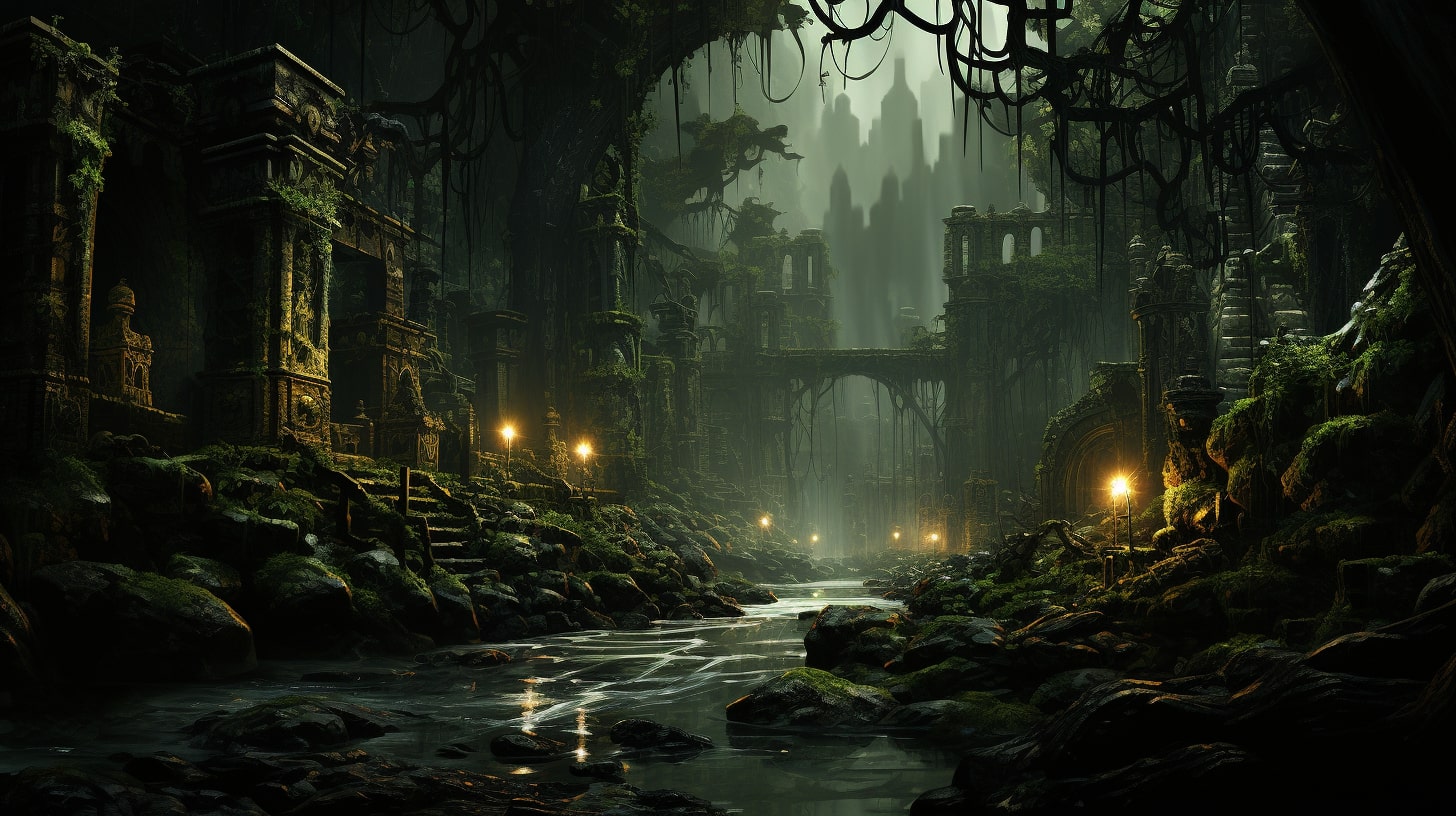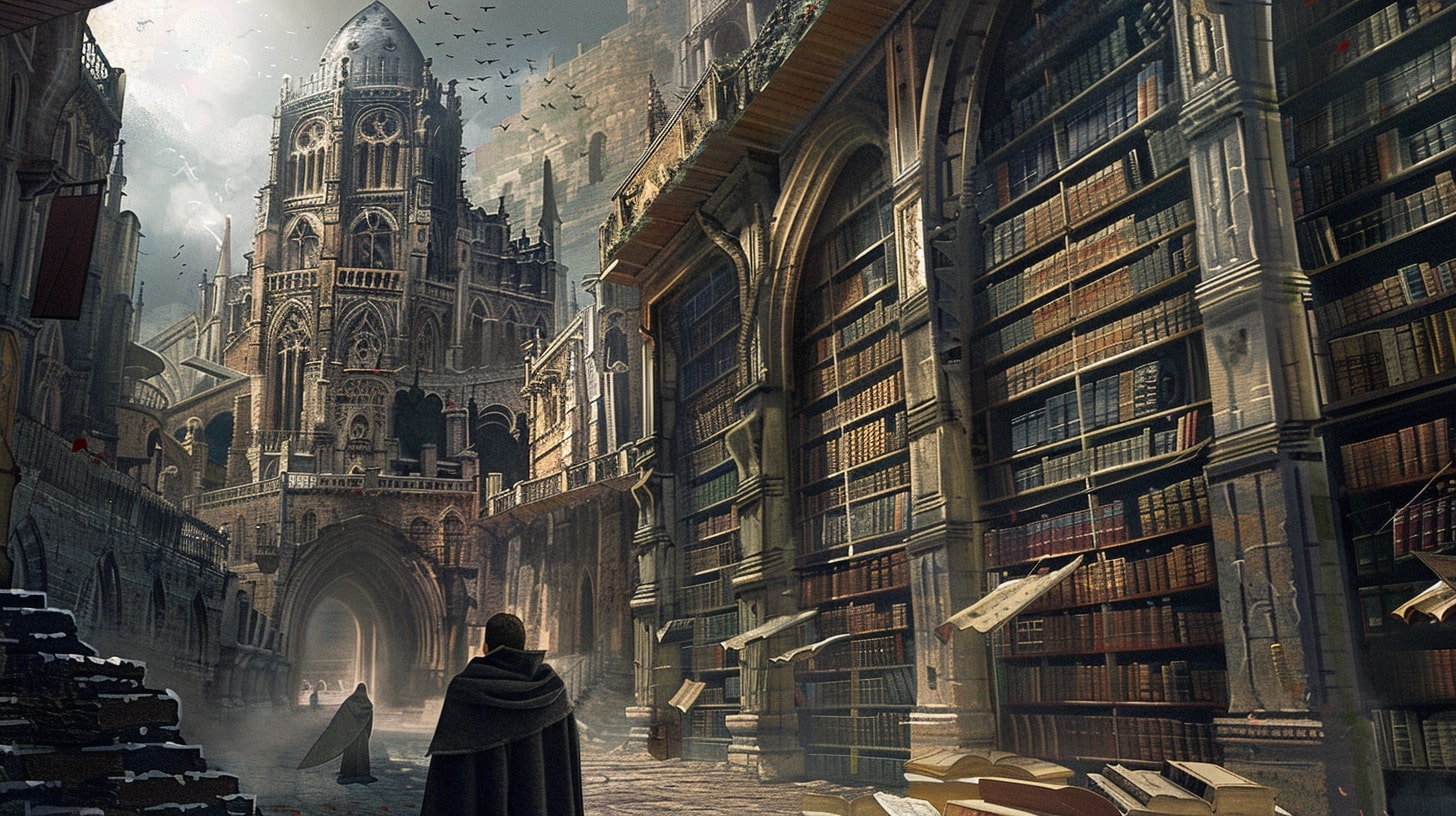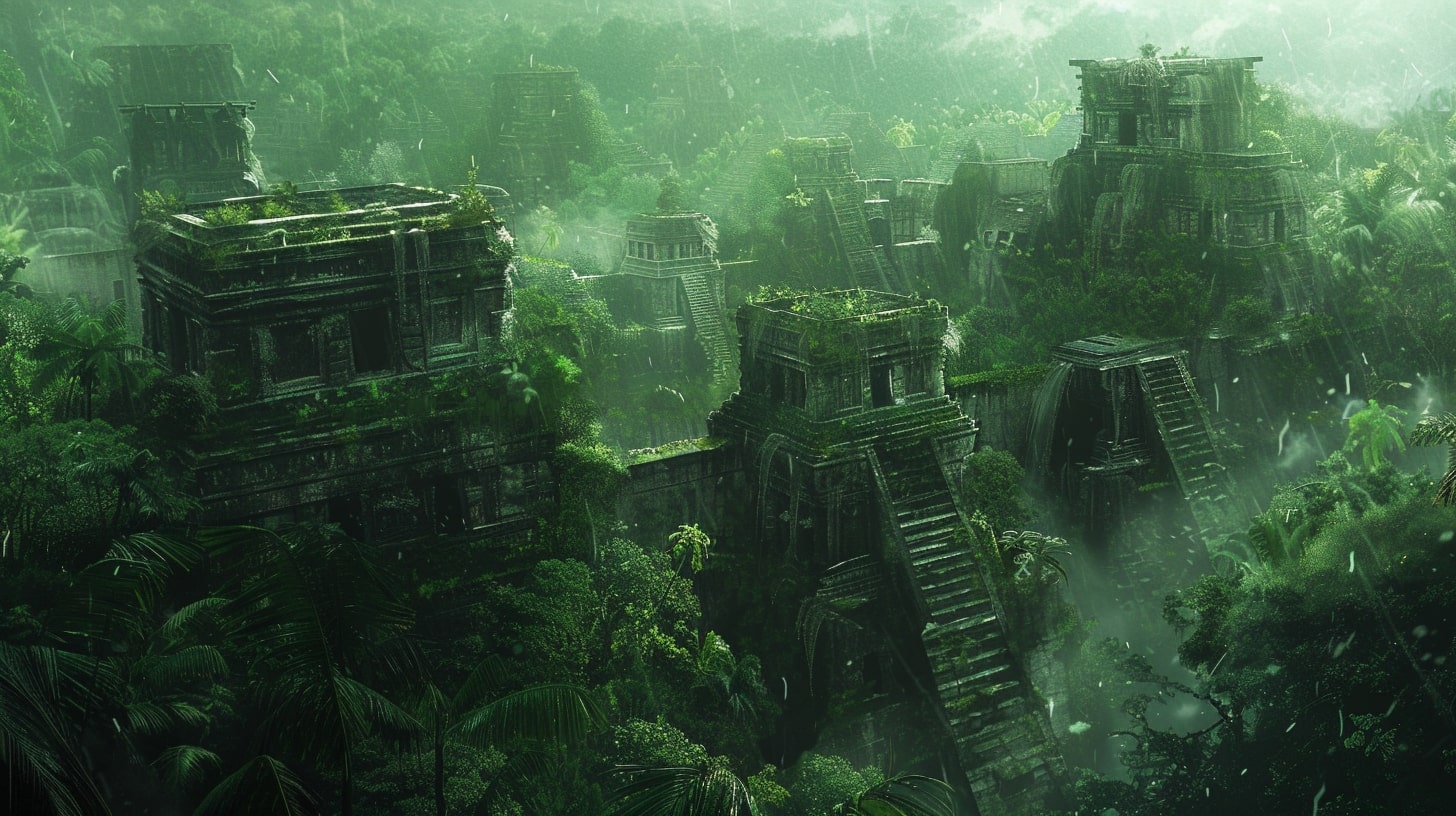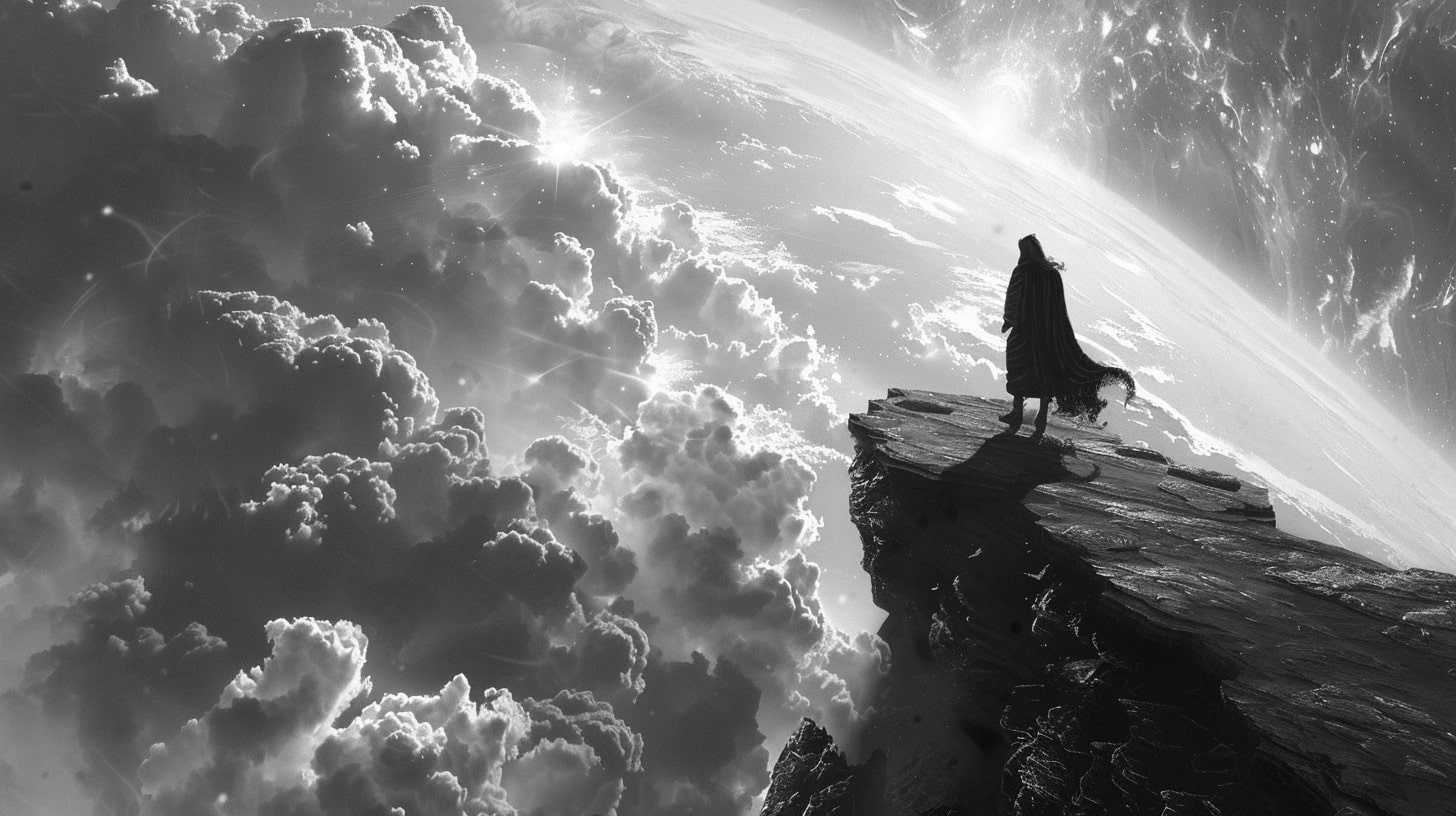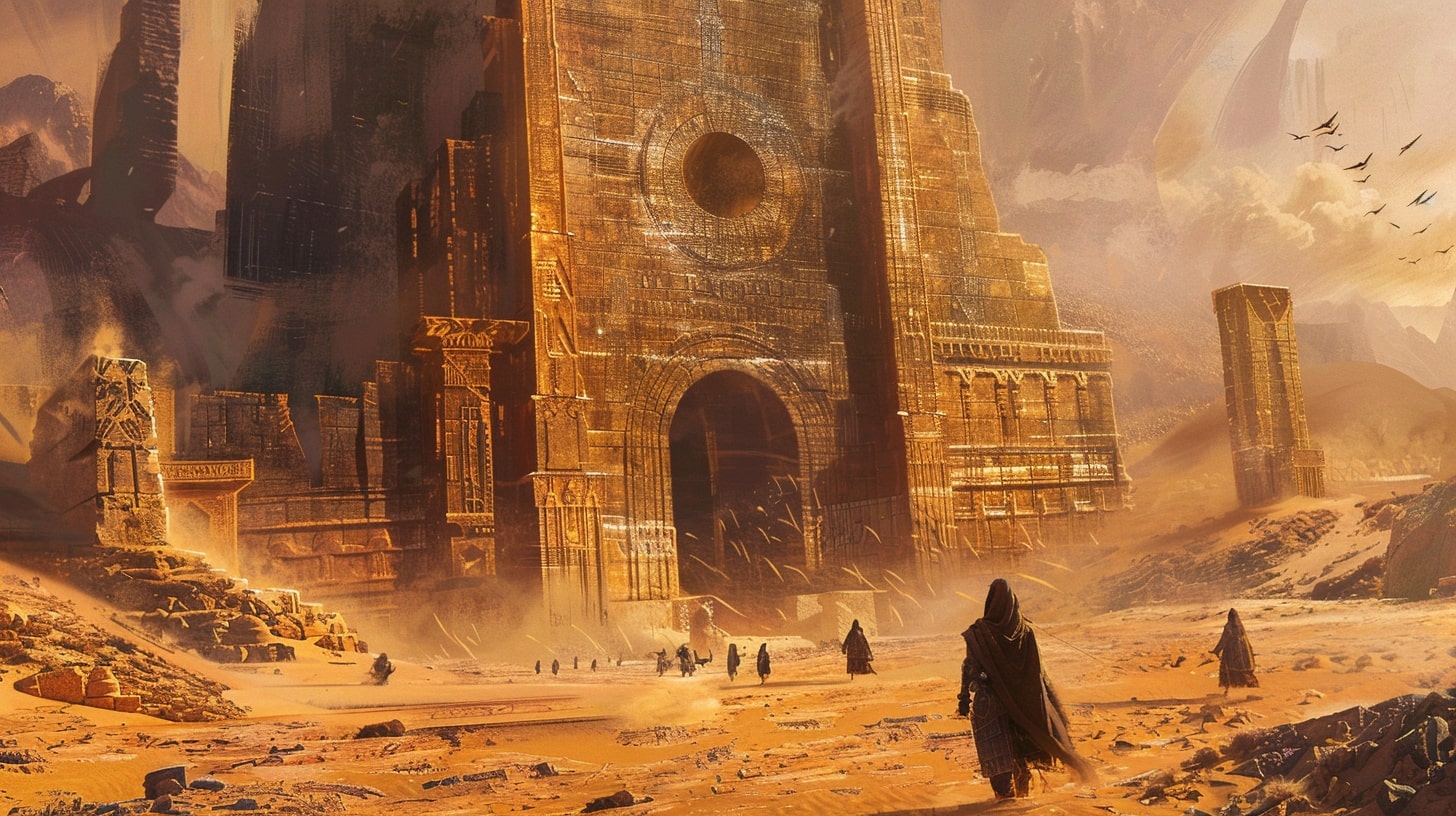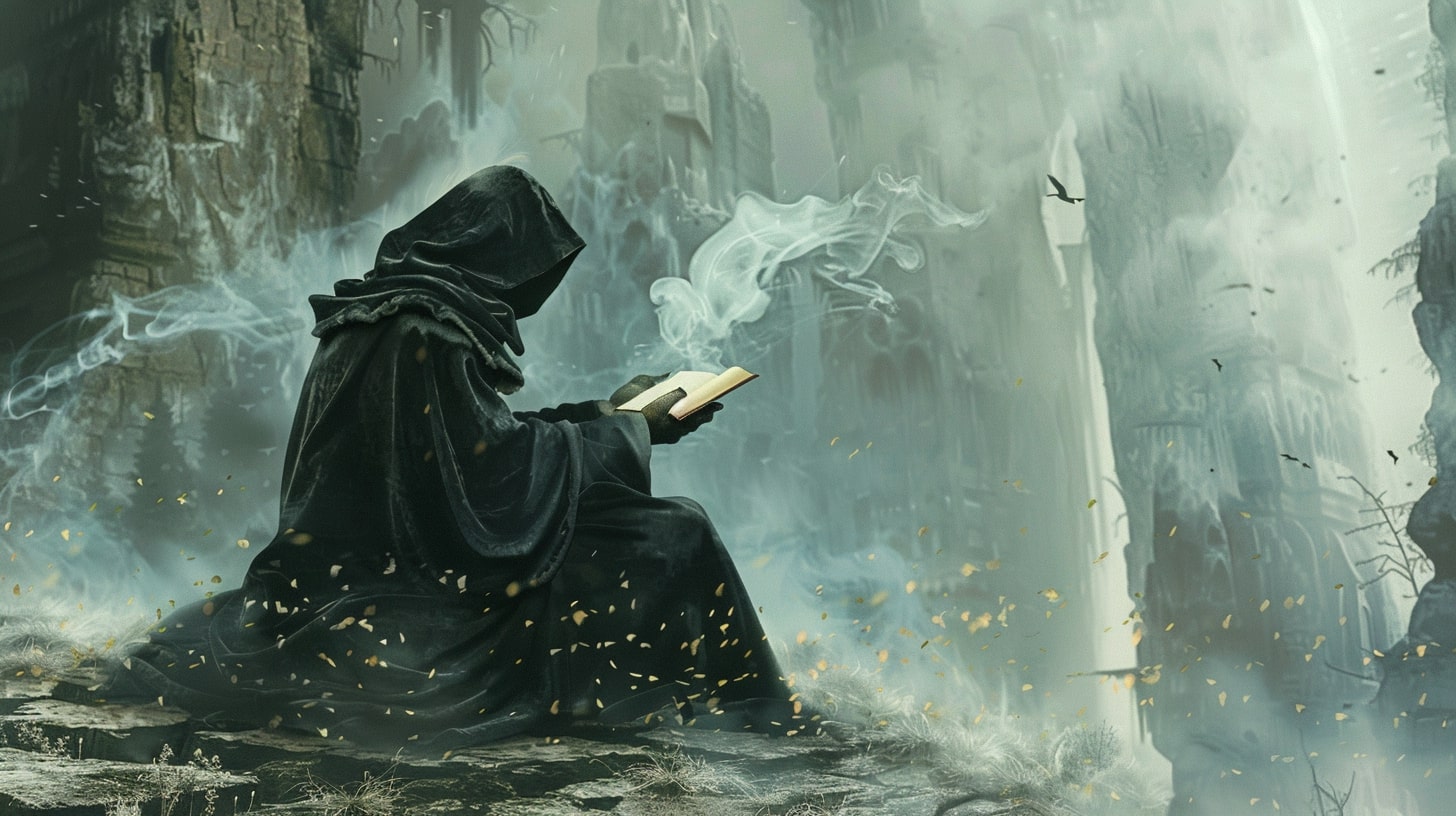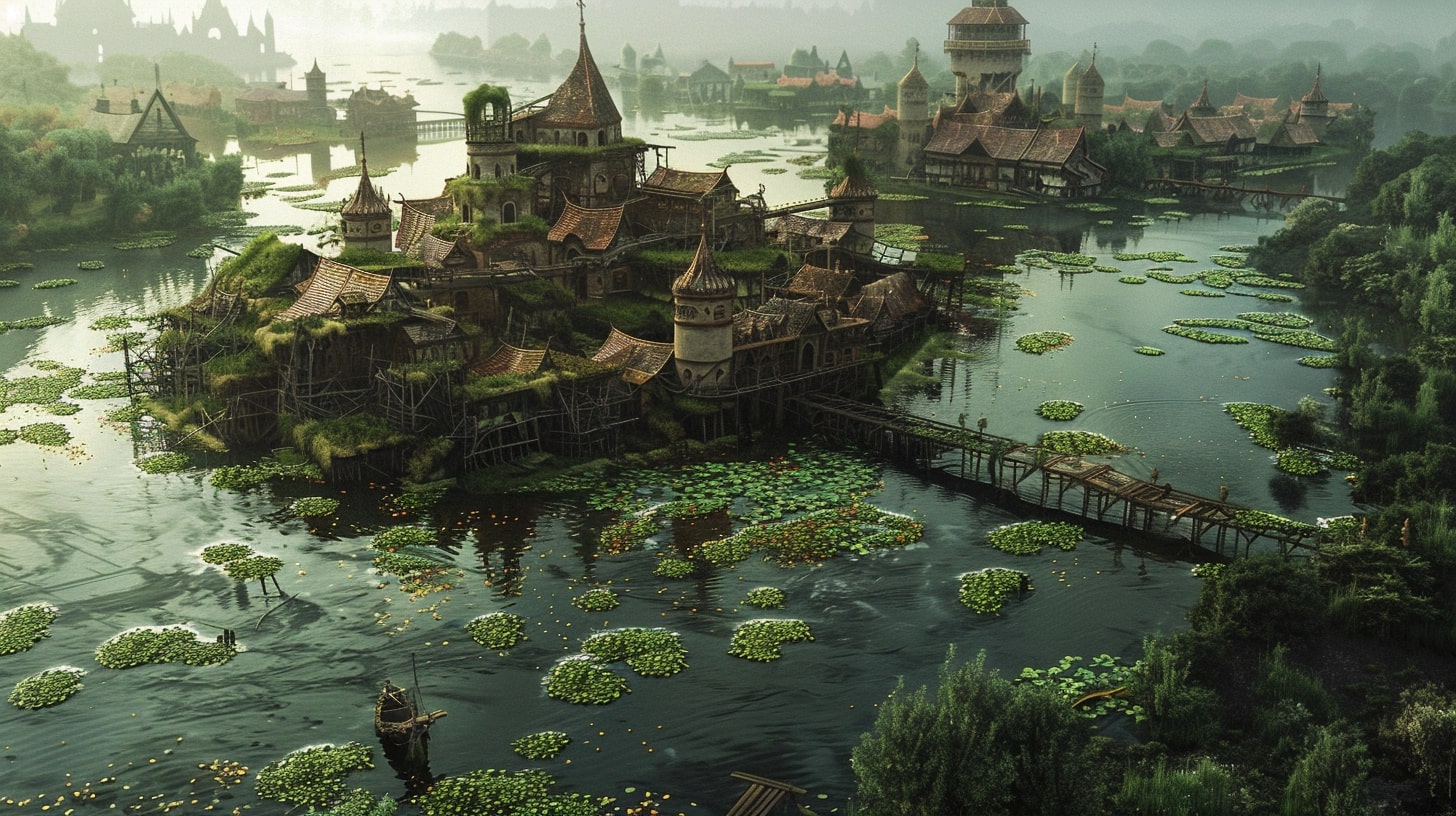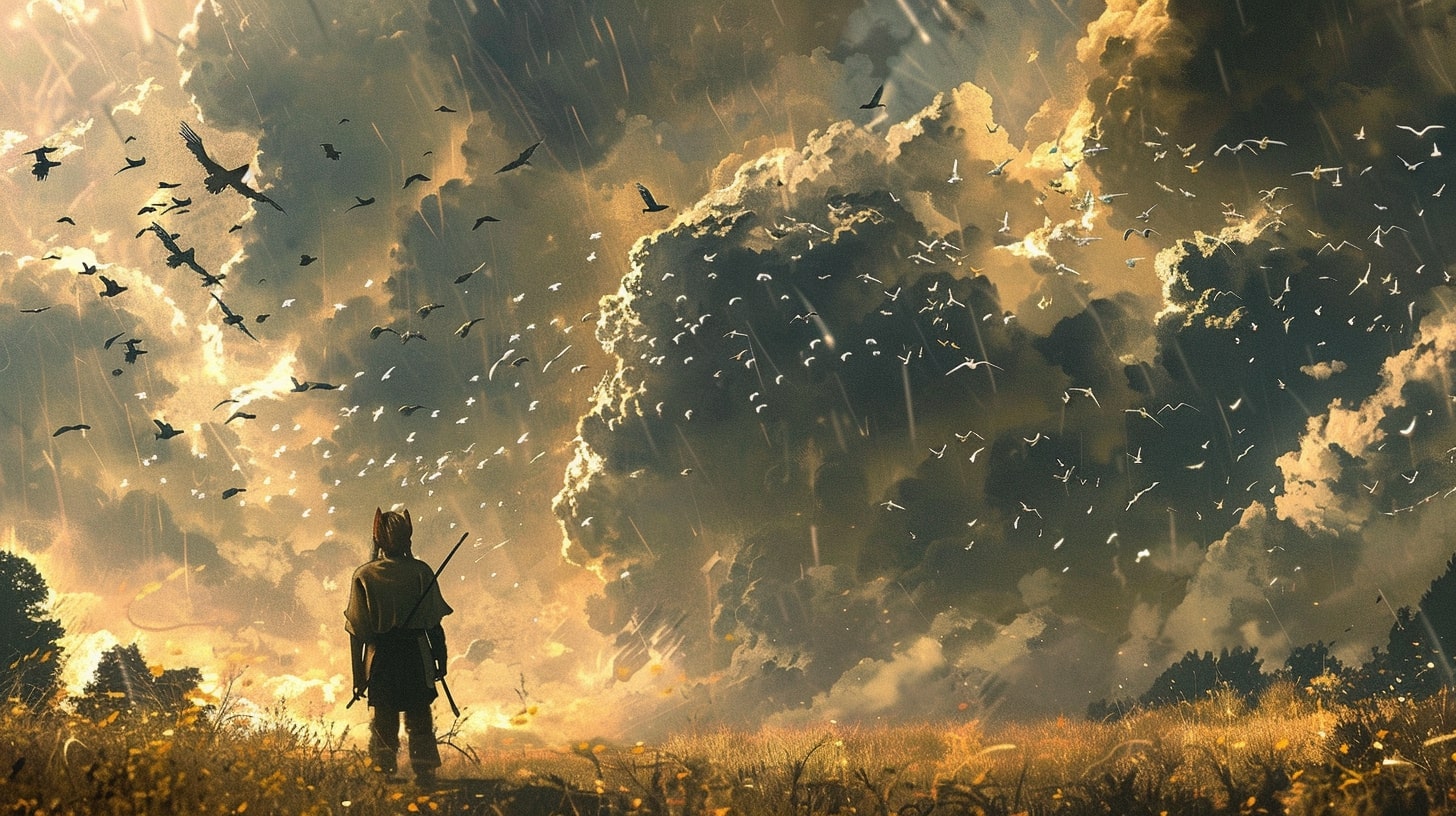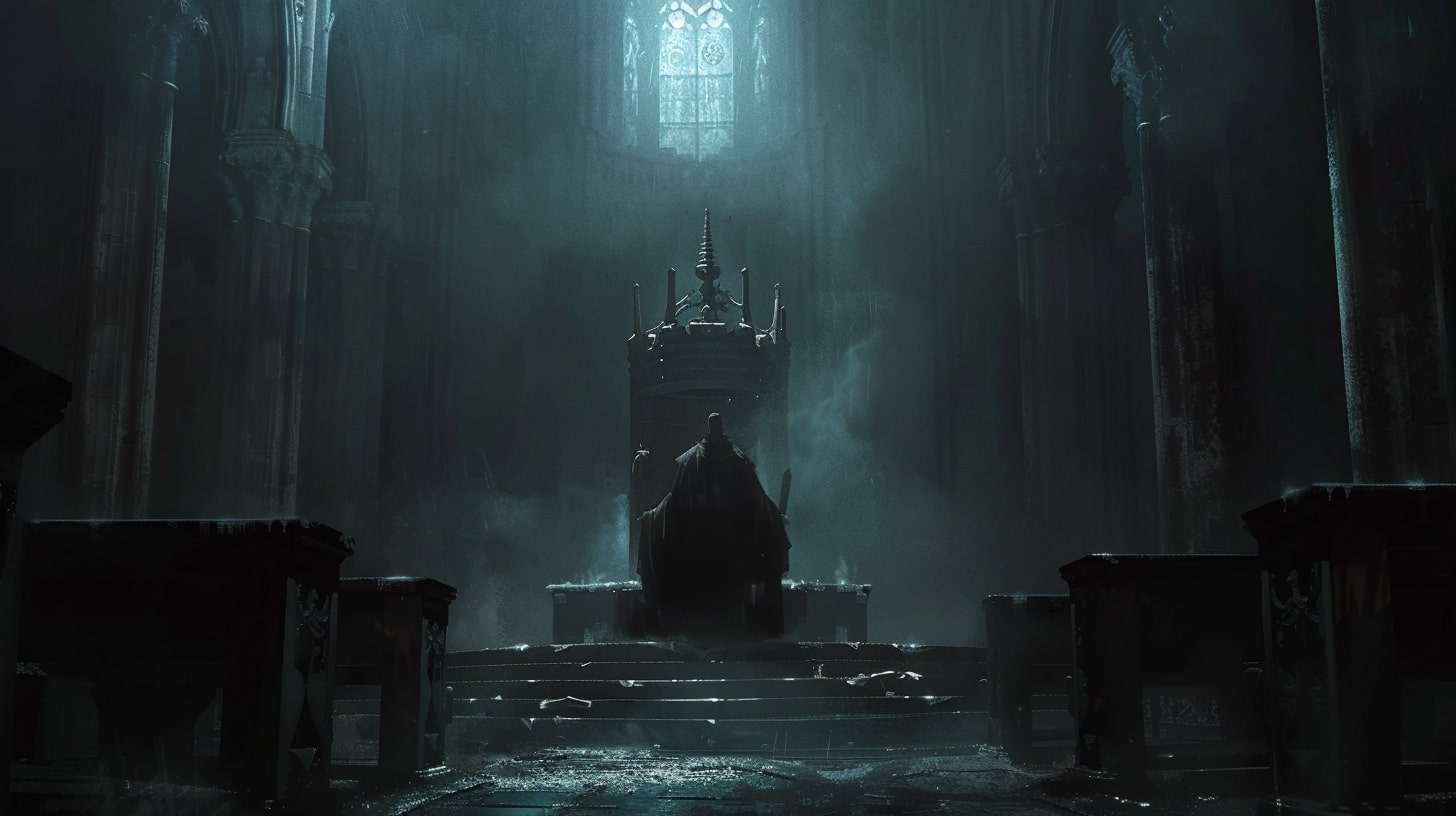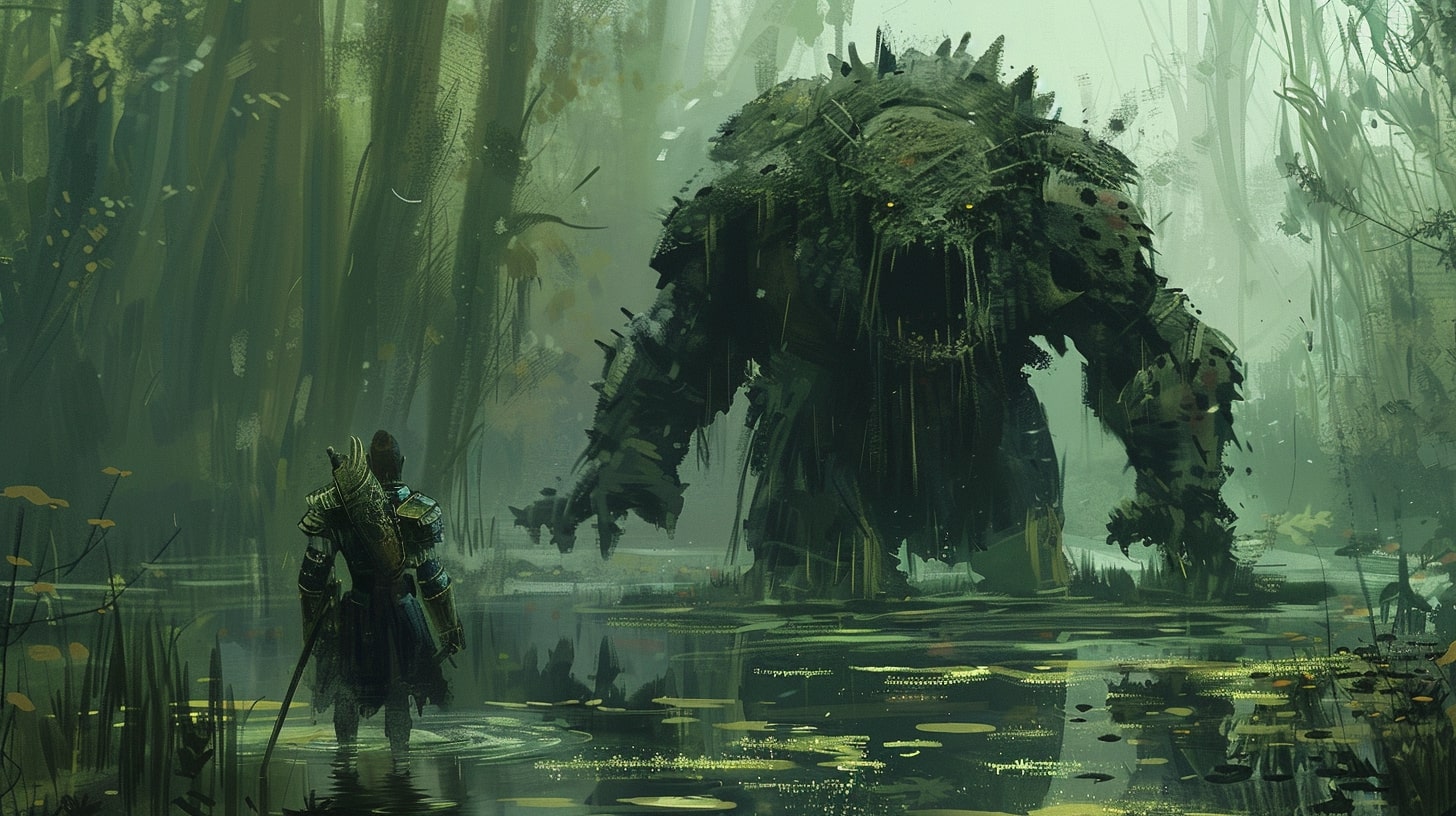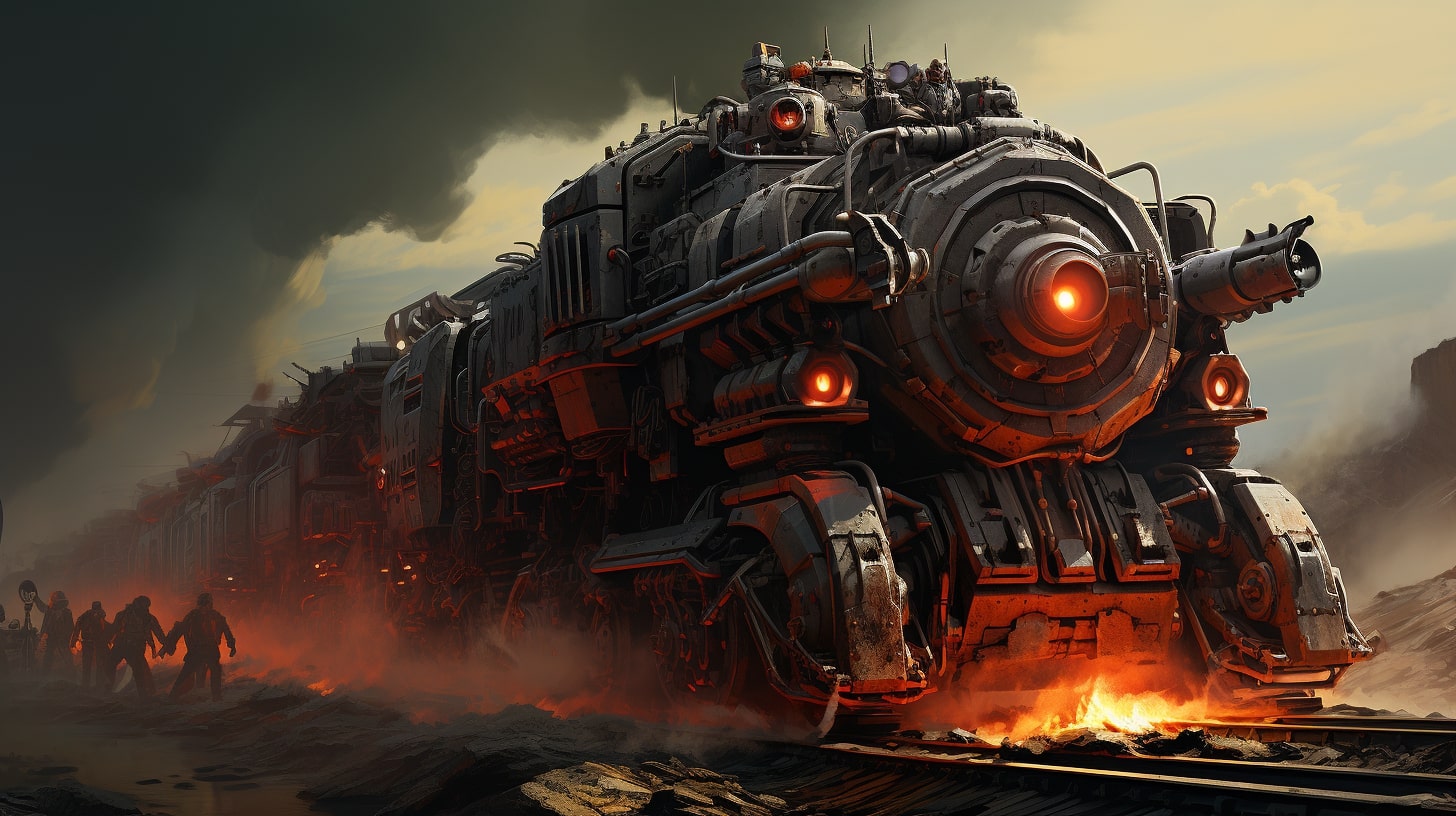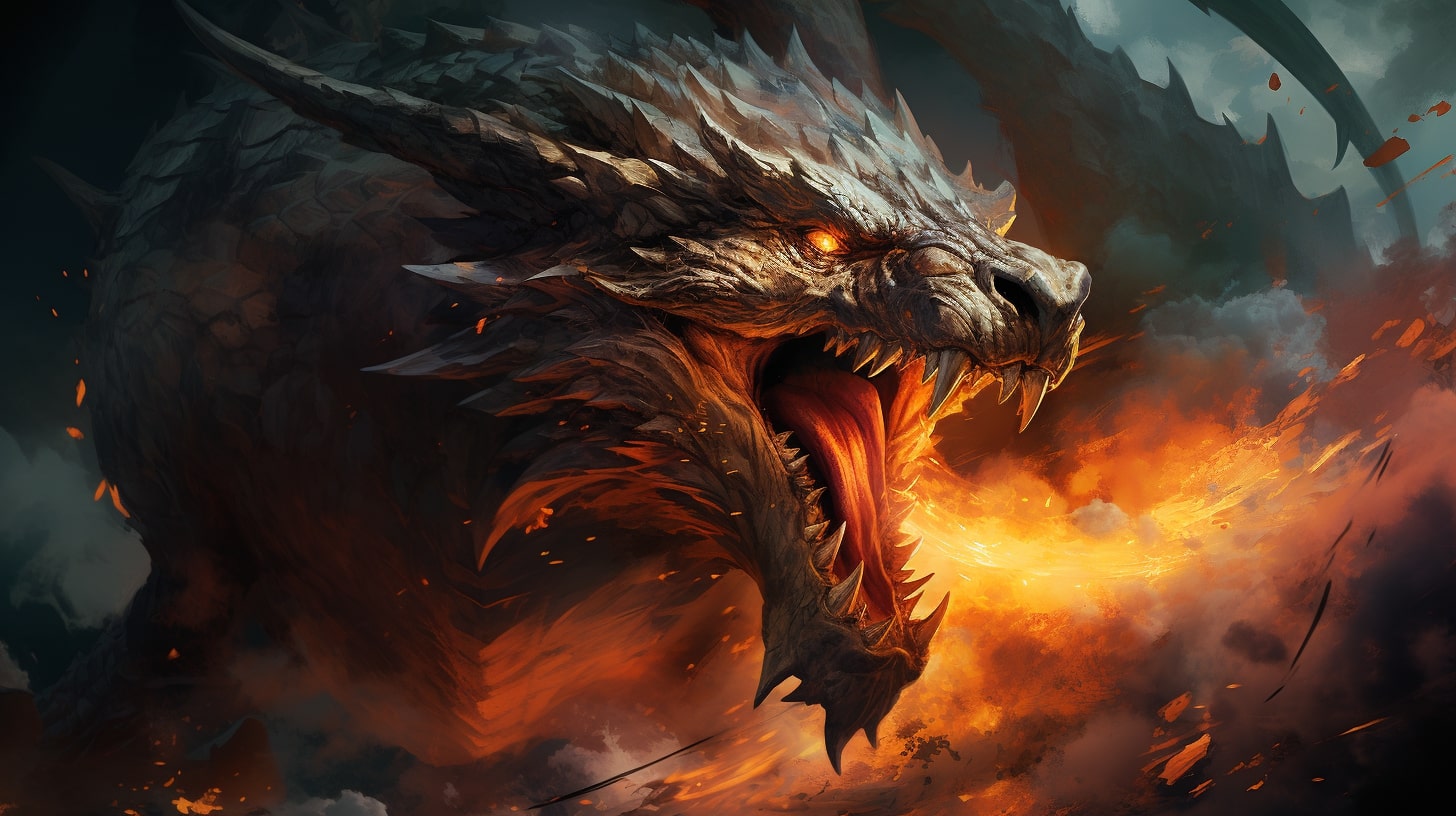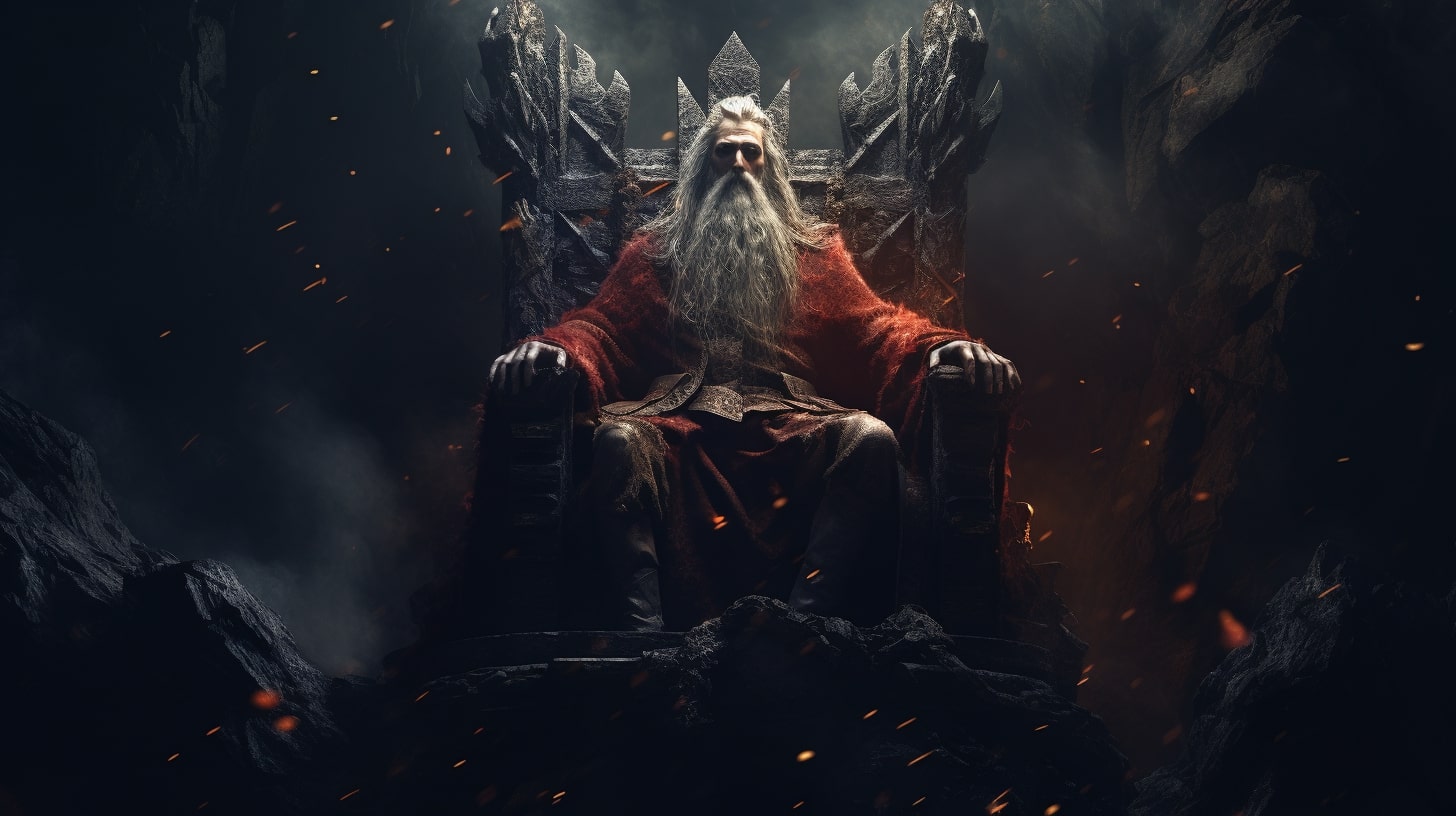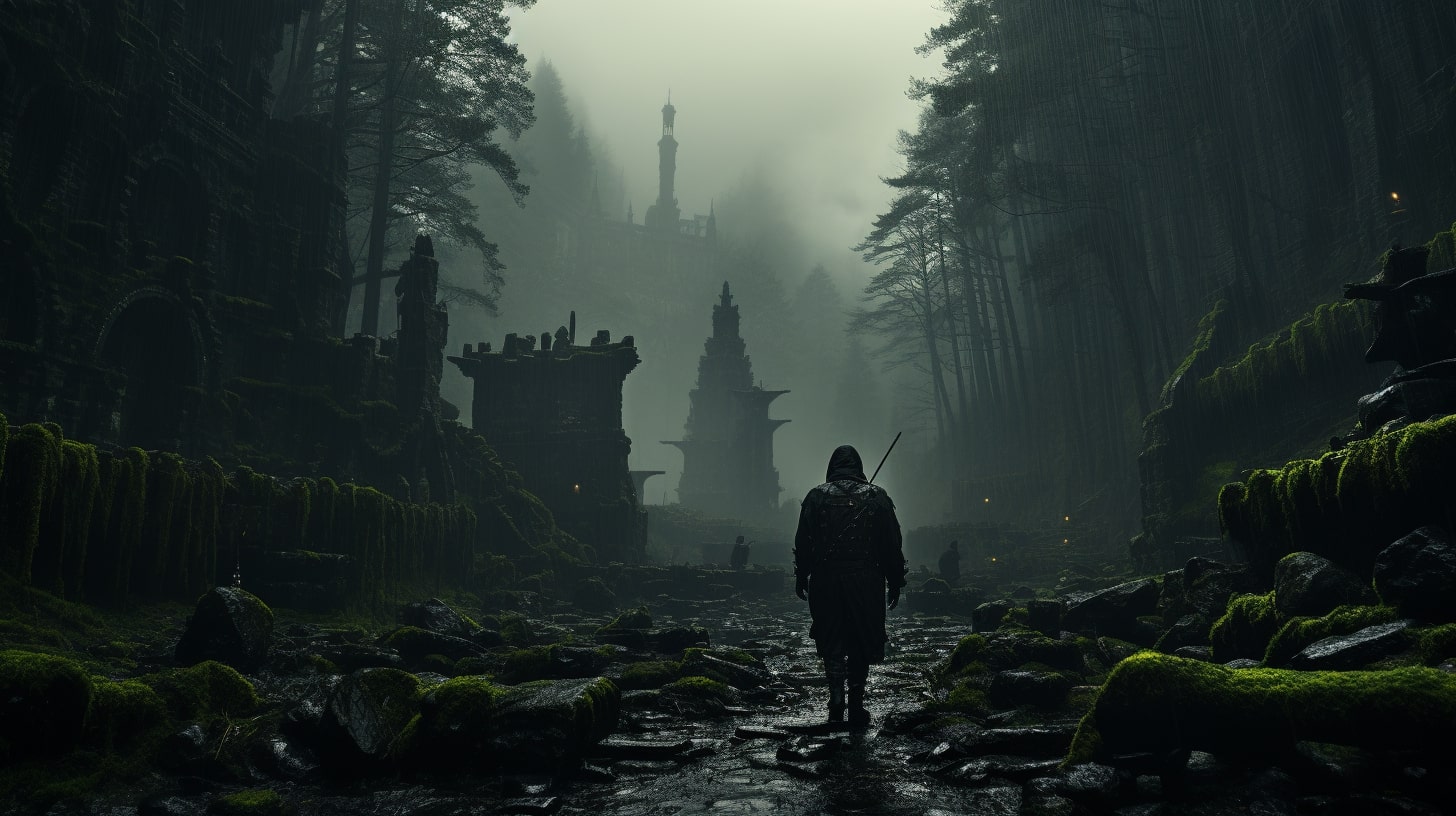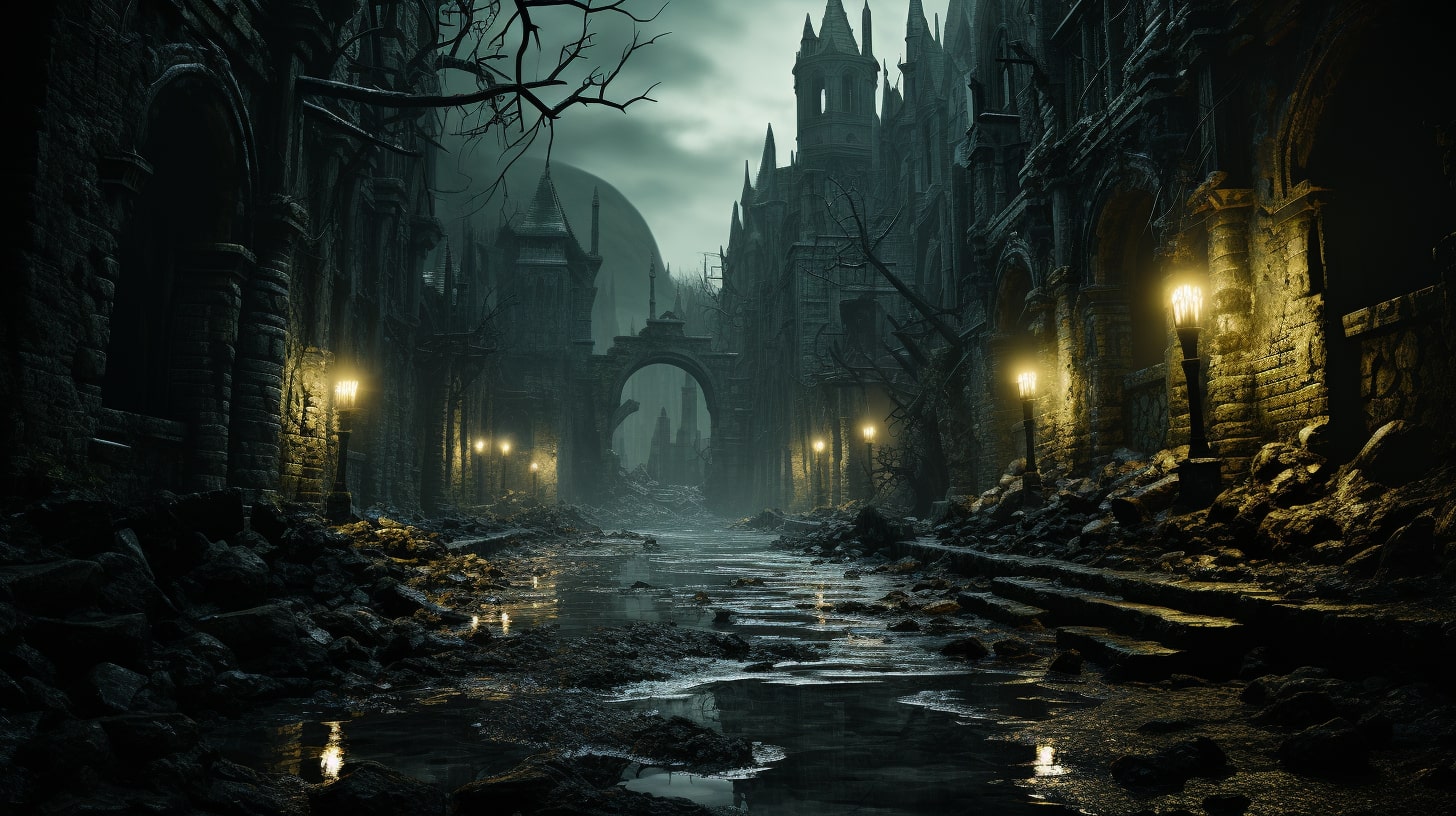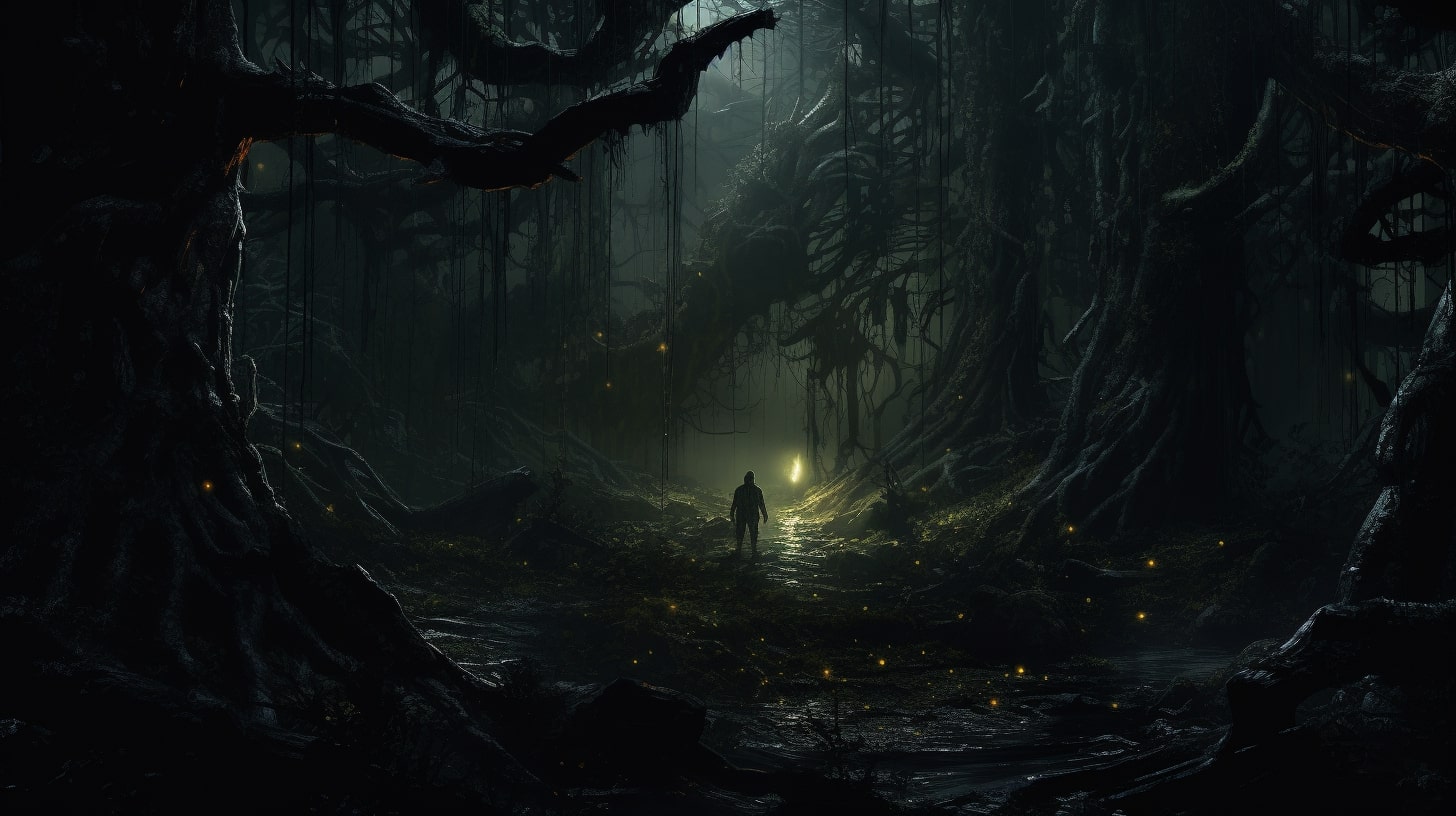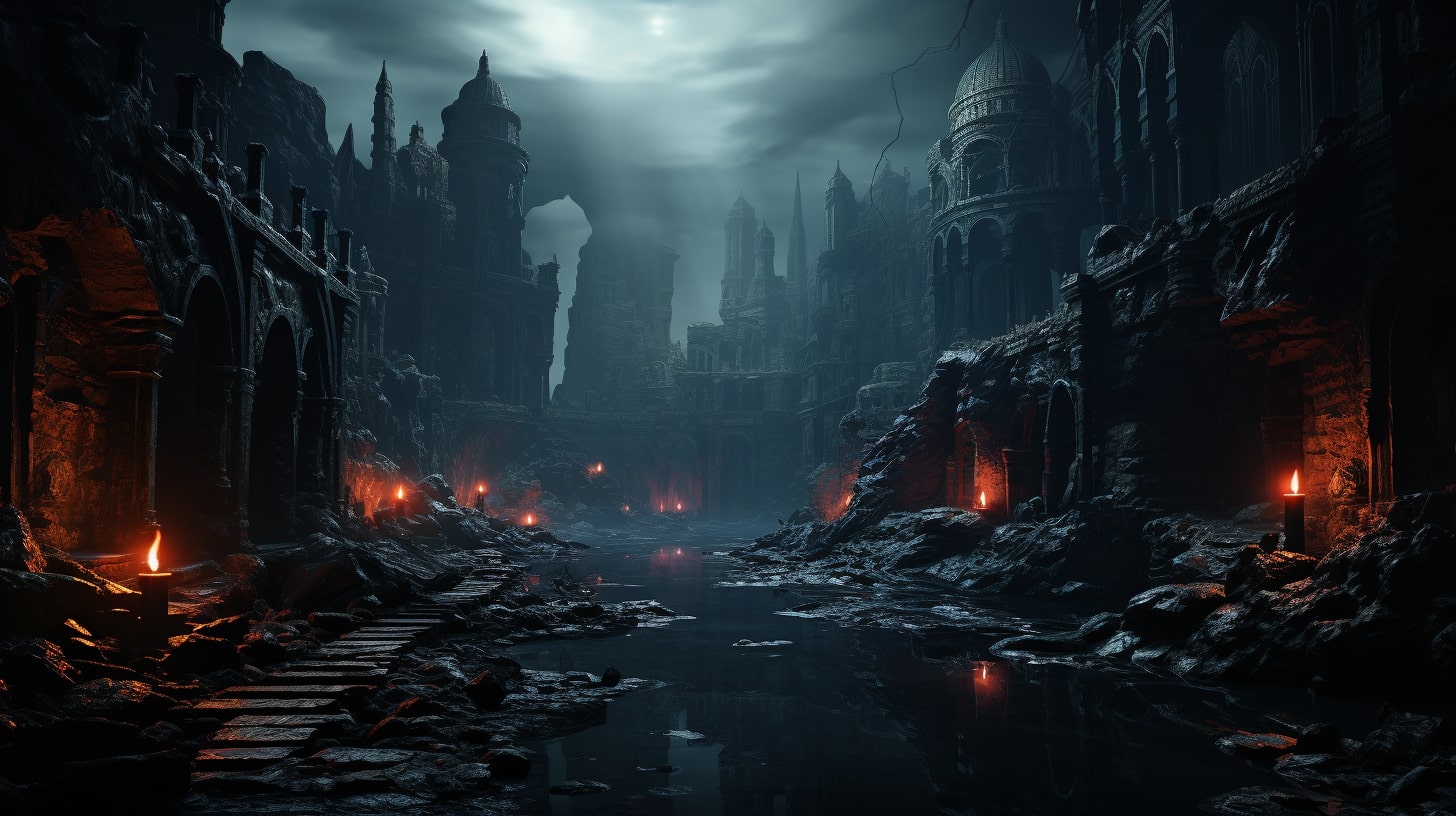The Art of Worldbuilding
Welcome to the fascinating world of worldbuilding! As a fantasy author, you have the power to create unique and immersive worlds that captivate readers and transport them to extraordinary realms.
The beauty of worldbuilding is that there are a couple of key elements that you need to keep in mind and if you can nail these, then you’ll build an immersive world that everyone can enjoy.
But before we dive into these worldbuilding elements let’s make sure we understand worldbuilding itself.
Introduction to Worldbuilding
Worldbuilding is the process of constructing an entire fictional world, complete with its own geography, cultures, histories, and even magic systems. It goes beyond simply creating a backdrop for your story; it is about constructing a believable and cohesive universe that engages readers and makes them feel like they are part of the narrative.
By building a robust and detailed world, you provide a rich backdrop against which your characters can thrive, your plot can unfold, and your readers can immerse themselves. It allows you to create a sense of depth and authenticity, making your story more compelling and memorable.
Why Worldbuilding is Essential for Fantasy Authors
Worldbuilding is an essential aspect of fantasy storytelling because it breathes life into your narrative. It allows you to shape the environments and societies in which your characters exist, influencing their beliefs, values, and behaviors. By crafting a well-developed world, you can create a tapestry that interweaves seamlessly with your characters and plot, enhancing the overall reading experience.
Worldbuilding also helps you establish the rules and limitations of your fictional universe. Whether it’s the intricacies of your magic system, the dynamics of political structures, or the ecology of fantastical creatures, your worldbuilding choices can shape the conflicts, challenges, and triumphs that propel your story forward.
Additionally, worldbuilding provides a platform for exploration and creativity. It allows you to delve into various aspects of your world, such as its geography, history, cultures, and more. This exploration can inspire new storylines, plot twists, and character arcs, providing a wealth of material to draw upon throughout your writing journey.
As you embark on your worldbuilding adventure, remember to have fun and let your imagination soar. Don’t be afraid to seek inspiration from various sources, such as worldbuilding ideas and worldbuilding prompts, to ignite your creativity. Embrace the opportunity to create a world that is uniquely yours, and watch as your story unfolds within its intricately crafted tapestry.
Now that we have established the importance of worldbuilding, let’s dive deeper into the various elements that comprise a well-constructed fictional world. From the physical world to cultures, histories, and magical systems, we will explore each aspect in detail to help you elevate your storytelling.

Worldbuilding Elements: Creating a Solid Foundation
To build a captivating fantasy world, it’s essential to create a solid foundation for your story. This involves developing the physical world, including its geography and climate, as well as the flora and fauna that inhabit it.
A lot of this was learned through the building of Odd Wonderful, Myth Dawn, and Boopieverse.
The Physical World
When crafting your fantasy world, consider the physical attributes that shape its landscapes. Think about the type of terrain, whether it’s mountainous, flat, or a mix of both.
Determine the presence of bodies of water, such as lakes, rivers, or oceans, and their locations within the world. These elements contribute to the overall aesthetics and provide opportunities for adventure and exploration.
Geography and Climate
The geography and climate of your world play a significant role in shaping its inhabitants and their way of life. Consider how the geography influences the distribution of resources, the establishment of civilizations, and the development of trade routes. Think about the impact of climate on the availability of food, the types of clothing worn, and the overall lifestyle of the people.
To add depth to your world, create diverse regions with distinct geographical features. This could include lush forests, arid deserts, snowy mountains, or sprawling grasslands. Each region can have its own unique climate, which affects the flora, fauna, and the cultures that thrive within them. By incorporating these details, you bring authenticity and richness to your world.
Flora and Fauna
The presence of diverse and captivating flora and fauna can greatly enhance your fantasy world. Consider the types of plants and animals that exist within your world and how they interact with the environment and the inhabitants. Are there mythical creatures or sentient beings unique to your world? What role do they play in the ecosystem and the lives of your characters?
To add depth to your world’s flora and fauna, create a variety of species with distinct characteristics and behaviors. Think about how they have adapted to their environment and the ways in which they are utilized by the cultures within your world. This diversity not only adds realism but also provides opportunities for conflict, exploration, and discovery.
By creating a solid foundation for your fantasy world through the physical world, geography and climate, and flora and fauna, you lay the groundwork for a captivating and immersive story. These elements will serve as a backdrop for the cultures, histories, and magic systems that you develop later in your worldbuilding process. Keep building upon this foundation, and watch your world come to life!
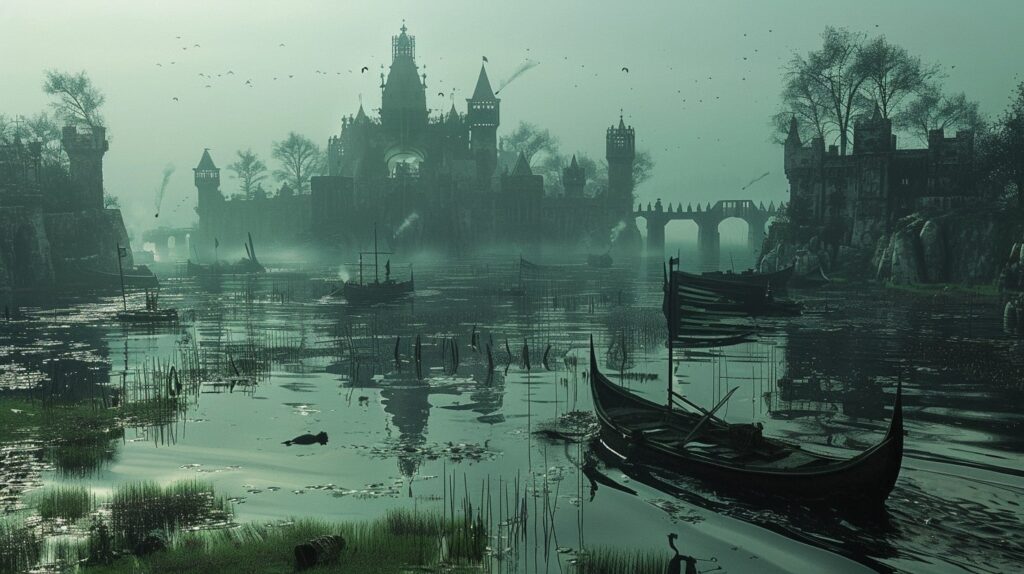
Crafting Believable Cultures
When it comes to worldbuilding for your fantasy novel, creating believable cultures is a crucial element that adds depth and authenticity to your story. Cultures encompass various aspects, including societies and governments, customs and traditions, and language and communication.
Societies and Governments
In worldbuilding, societies and governments play a significant role in shaping the dynamics of your fictional world. Consider the structure of your society, its hierarchy, and the distribution of power. Are there monarchies, democracies, or other forms of governance? Are there social classes or divisions that impact the lives of your characters?
To create a well-rounded society, think about the values and norms that shape the behavior of its inhabitants. Are they driven by honor, loyalty, or individualism? How do these values influence their interactions and decision-making processes? By establishing these elements, you can develop a rich and believable society that resonates with your readers.
Customs and Traditions
Customs and traditions provide insight into the daily lives of your characters and the cultural practices within your world. Consider the rituals, celebrations, and ceremonies that are unique to each culture. These can include religious festivals, coming-of-age rituals, or even mundane activities that hold cultural significance.
To add depth to your world, explore the origins and meanings behind these customs. Are they rooted in mythology or historical events? How do they impact the lives of your characters and shape their identities? By incorporating these details, you can bring your cultures to life and immerse your readers in a vibrant and dynamic world.
Language and Communication
Language is a fundamental aspect of culture and plays a vital role in worldbuilding. Consider developing distinct languages or dialects for different cultures within your world. Think about how language influences communication, social status, and even the identities of your characters.
You can create linguistic diversity by incorporating unique vocabulary, idioms, or even different writing systems. Additionally, consider how language barriers or translation challenges might impact interactions between characters from different cultures. By paying attention to language and communication, you can add depth and authenticity to your world.
By crafting believable cultures through the exploration of societies and governments, customs and traditions, and language and communication, you can create a vibrant and immersive world for your readers. Remember to consider the interplay between these elements and how they shape the lives and experiences of your characters. For more ideas and inspiration on worldbuilding, check out our article on worldbuilding cultures.

Developing Rich Histories
To create a captivating fantasy world, it’s essential to develop rich histories that add depth and intrigue to your storytelling. In this section, we will explore three important elements of worldbuilding: mythology and legends, historical events, and ancestry and lineages.
Mythology and Legends
A well-crafted mythology and a collection of captivating legends can breathe life into your fantasy world. These stories can provide context, explain the origins of important elements, and offer a sense of wonder and mystery for your readers.
Consider creating myths and legends that are unique to your world. These tales can revolve around creation stories, powerful deities, mythical creatures, or epic heroes. By incorporating these elements, you can enrich the cultural fabric of your world and add depth to your characters’ beliefs and motivations.
Historical Events
Just like real-world history shapes our societies, the history of your fantasy world will shape the present and future of your characters’ lives. Develop a timeline of significant historical events that have shaped the world, such as wars, revolutions, or cataclysmic events.
These historical events can influence the social, political, and cultural landscapes of your world. They can also provide a backdrop for conflicts, alliances, and rivalries among different factions or nations. By weaving these events into your narrative, you can create a sense of continuity and realism within your world.
Ancestry and Lineages
Ancestry and lineages play a vital role in many fantasy stories, particularly those with royal families or noble lineages. Develop family trees and genealogies for important characters, dynasties, or factions. This can help you establish hierarchies, power struggles, and the influence of bloodlines on the world you’ve created.
Understanding the lineage of characters can also provide opportunities for plot twists, secrets, and hidden connections. It adds complexity and depth to your storytelling while giving your readers a sense of the interconnectedness of your world.
By incorporating these elements of rich histories into your worldbuilding, you can create a more immersive and believable fantasy world. Remember to stay consistent with your world’s mythology, historical events, and lineages throughout your narrative. This consistency will help your readers become fully invested in the world you’ve created.
Continue to weave worldbuilding into your narrative to learn how to seamlessly integrate these elements into your storytelling and enhance the reading experience for your audience.
Magic Systems and Supernatural Elements
In the realm of fantasy worldbuilding, magic systems and supernatural elements add depth and intrigue to your storytelling. These elements bring fantastical powers, mythical creatures, and extraordinary phenomena to life within your created world. Let’s explore the different aspects of magic systems and supernatural elements that you can incorporate into your world.
Types of Magic Systems
Magic systems define the rules and mechanics by which magic operates in your world. They can vary greatly, from intricate systems with detailed hierarchies of spells to more mysterious and intuitive forms of magic. Here are some common types of magic systems:
| Magic System | Description |
|---|---|
| Elemental Magic | Magic based on the manipulation of natural elements like fire, water, earth, and air. |
| Ritual Magic | Magic that requires specific rituals, incantations, or ceremonies to harness its power. |
| Divine Magic | Magic derived from deities or higher beings, often bestowed upon followers through worship or chosen individuals. |
| Blood Magic | Magic that involves the use of blood or life force as a source of power. |
| Necromancy | Magic focused on communication with and manipulation of the dead. |
| Chaos Magic | Magic fueled by unpredictable and chaotic energy, often with unintended consequences. |
By defining the type of magic system in your world, you create a framework for how magic operates and interacts with characters and the environment.
Supernatural Beings and Creatures
Supernatural beings and creatures add a touch of wonder and mystery to your world. They can range from majestic mythical creatures to terrifying monsters. These entities can have unique abilities, characteristics, and roles within your world. Some examples include:
| Supernatural Beings/Creatures | Description |
|---|---|
| Dragons | Majestic, powerful creatures associated with wisdom and fire. |
| Elves | Graceful, long-lived beings known for their connection to nature and magical prowess. |
| Werewolves | Humans capable of transforming into wolves or wolf-like creatures, often associated with the moon and shapeshifting. |
| Vampires | Immortal creatures that feed on the life essence of others, typically associated with night and supernatural abilities. |
| Spirits | Ethereal entities that embody natural elements, emotions, or concepts. |
| Demons | Malevolent entities from other realms, often associated with dark magic and corruption. |
Including a variety of supernatural beings and creatures in your world can add depth, diversity, and new dimensions to your storytelling.
Rules and Limitations
To maintain consistency and balance within your world, it’s important to establish rules and limitations for magic systems and supernatural elements. These rules can govern factors such as the availability of magic, the extent of magical abilities, and the consequences of using magic. By establishing clear boundaries, you create a sense of realism and prevent magic from becoming an all-powerful solution to every problem.
Consider the following aspects when defining rules and limitations:
- Energy Source: Determine the source or sources of magical energy in your world. It could be derived from nature, deities, or personal life force.
- Training and Skill: Decide if magic requires training, study, or inherent talent. This can affect the accessibility of magic to different characters.
- Consequences: Explore the potential consequences, drawbacks, or risks of using magic. This can add complexity and tension to your story.
- Ethical Considerations: Delve into the ethical implications of magic usage, including societal norms, cultural beliefs, and potential conflicts.
By carefully crafting rules and limitations, you create a more believable and engaging magical world for your readers to explore.
As you weave magic systems and supernatural elements into your world, remember to consider their impact on other worldbuilding elements such as cultures, histories, and characters. The integration of these elements should be seamless, enhancing the richness and authenticity of your storytelling. With a well-crafted magic system and thoughtfully designed supernatural elements, you can elevate your story and captivate readers in the fantastical world you’ve created.
Bringing Characters to Life
In the realm of worldbuilding, one of the most important aspects is bringing characters to life. Characters are the heart and soul of any story, and their development can greatly impact the overall narrative. Let’s explore three key elements to consider when crafting characters within your world.
Character Backstories
Character backstories provide depth and context to your characters, allowing readers to understand their motivations, desires, and past experiences. When incorporating worldbuilding into character backstories, consider how the world you’ve created has shaped their lives. Are they influenced by the customs and traditions of their society? Do they have a unique lineage or ancestry that affects their personality or abilities? By intertwining your characters’ personal histories with the world they inhabit, you create a more immersive and believable experience for the reader.
Interactions and Relationships
Characters do not exist in isolation; they interact with other individuals within their world. Interactions and relationships play a crucial role in shaping a character’s development and can provide opportunities for worldbuilding. Consider how the cultures, societies, and governments within your world impact the dynamics between characters. Do characters from different backgrounds clash or forge alliances? Are there specific customs or traditions that influence their interactions? By exploring these aspects, you can create compelling conflicts, friendships, and romances that both reflect and contribute to the world you’ve built.
Impact of Worldbuilding on Characters
Worldbuilding elements can have a profound impact on the development and growth of your characters. The world they inhabit shapes their beliefs, values, and even their abilities. Magic systems and supernatural elements are examples of worldbuilding aspects that can directly influence characters. How do characters navigate and utilize the magic or supernatural forces present in your world? Are there rules and limitations that govern these elements? By establishing these parameters, you provide a framework that guides your characters’ actions and choices.
Remember, characters are not mere vessels to explore your world; they are the driving force behind your story. By incorporating worldbuilding elements into their backstories, interactions, and the impact on their lives, you create a cohesive and immersive narrative that captivates your readers. For more tips and inspiration on worldbuilding, check out our worldbuilding resources.
Weaving Worldbuilding into Your Narrative
As a fantasy author, integrating worldbuilding elements seamlessly into your narrative is essential for creating a rich and immersive reading experience. By carefully balancing worldbuilding and plot, you can captivate your readers and enhance their overall enjoyment of your book. Here are some key considerations to keep in mind.
Integrating Worldbuilding Seamlessly
To ensure a smooth integration of worldbuilding into your narrative, it’s important to avoid overwhelming your readers with excessive information. Introduce worldbuilding elements gradually, weaving them into the story organically. Rather than providing lengthy exposition, reveal details through character interactions, dialogue, or brief descriptions that paint a vivid picture of your world. This approach allows readers to engage with the worldbuilding naturally, without disrupting the flow of the story.
Consider incorporating worldbuilding elements at significant plot points or when they directly impact the characters’ experiences. This helps to seamlessly integrate the world you’ve created into the narrative and makes it feel essential to the story itself.
Balancing Worldbuilding and Plot
While worldbuilding is crucial for establishing the setting and atmosphere of your story, it’s important to strike a balance between worldbuilding and plot progression. Ensure that your worldbuilding elements serve the story rather than overshadowing it. Keep the focus on your characters and their journey, using worldbuilding to enhance their experiences and drive the plot forward.
Remember that not all aspects of your world need to be fully explored in the story itself. By hinting at the broader scope of your world and leaving room for imagination, you can create a sense of depth and intrigue. This allows readers to engage with your story while still leaving room for their own interpretations and discoveries.
Using Worldbuilding to Enhance the Reading Experience
Well-executed worldbuilding has the power to enhance the reading experience, immersing readers in a vivid and believable world. By paying attention to sensory details, such as sights, sounds, smells, and textures, you can make your world come alive in the minds of your readers. Describe the unique landscapes, architecture, and cultural practices to paint a rich tapestry for their imaginations.
Additionally, consider the impact of worldbuilding on your characters. How does their environment shape their beliefs, values, and behaviors? How do they navigate the intricacies of the societies and customs you’ve created? By exploring these aspects, you can deepen your readers’ connection to your characters and make them feel more real.
By integrating worldbuilding seamlessly, balancing it with plot development, and using it to enhance the reading experience, you can elevate your story to new heights. Remember to consider your target audience, their reading level, and the tone of your voice as you craft your worldbuilding elements. Happy writing!
For more tips on worldbuilding, check out our articles on worldbuilding inspiration, worldbuilding techniques, and worldbuilding process.




